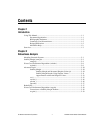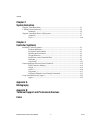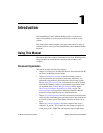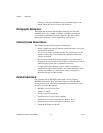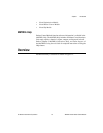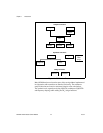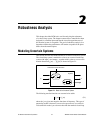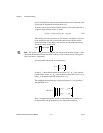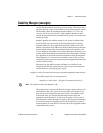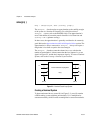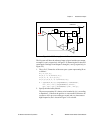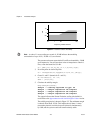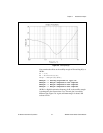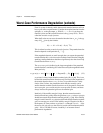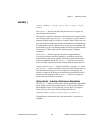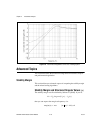
Chapter 2 Robustness Analysis
© National Instruments Corporation 2-3 MATRIXx Xmath Robust Control Module
Stability Margin (smargin)
Assume that the nominal closed-loop system is stable. That belief raises a
question: Does the system remain stable for all possible uncertain transfer
functions that satisfy the magnitude bounds (Equation 2-1)? If so, the
system is said to be robustly stable. If the magnitude bounds are small
enough, the uncertainties will not destabilize the system; your system will
be robustly stable.
Roughly speaking, the stability margin of your system is defined as the
factor by which you can increase all the magnitude bounds l
i
and still
maintain stability for all possible uncertain transfer functions δ
i
. If this
number is larger than one (0 dB), then you know that there are no uncertain
transfer functions that satisfy the magnitude bound and destabilize your
system. Moreover, the number tells you how much more uncertainty your
system could tolerate than the given bounds l
i
(ω). If the margin is less than
one, then there are uncertain transfer functions that satisfy the magnitude
bound (Equation 2-1) and result in an unstable system. In this case, the
margin tells you how much you must reduce the magnitude bounds before
you have robust stability.
More precisely, the stability margin at frequency ω is defined as the
smallest α such that the system can have a pole at jω, with the uncertain
transfer functions satisfying |δ
i
(jω)| ≤ αl
i
(ω):
margin(w) = min{ α| systems can have a pole at jω with magnitude bounds αl
i
(jω)}
The stability margin also can be expressed as:
margin(w) = min{ α| det I – H
qr
jωΔ ≠ 0 such that |Δ
ii
|≤αl
i
(α)}
Note The stability margin only depends on H
qr
.
The margin often is expressed in dB. If the margin is greater than zero for
all frequencies, then your system is robustly stable. If the margin is less
than zero for some frequencies, then your system is not robustly stable.
In particular, there are uncertain transfer functions that satisfy the
magnitude bound (Equation 2-1) and cause the system to have a pole at
those frequencies where the margin is negative. This does not mean that any
δ
i
values that satisfy the magnitude bound will destabilize the system: it
means that there are some bad δ
i
values that satisfy the magnitude bounds
and destabilize the system.



